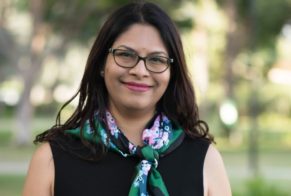Out of the 17 Sustainable Development Goals (SDGs), it is Goal 11 that speaks the loudest to me.
Goal 11: Make cities inclusive, safe, resilient, and sustainable.
Perhaps it is no surprise that I am an urban planner and that I spend much of my time, thinking, and learning about how we can shape our fast-growing cities to meet the challenges of our times.
Reflecting on SDG11, bearing in mind that formulating the SDGs involved consulting five million people across 88 countries, it is interesting to note which concepts are included. Sustainability is definitely in there, but only after inclusive, safe, and resilient. Inclusivity is a broad concept which focuses on city policies and assets meeting the needs of residents regardless of their age, gender, race, and socioeconomic status (amongst other considerations). Safety is self-explanatory. But what about resilience: What is it? Why it is important? And how does it relate to sustainability?
Urban Resilience is “the capacity of individuals, communities, institutions, businesses, and systems within a city to survive, adapt, and grow no matter what kinds of chronic stresses and acute shocks they experience.” (Source: 100resilientcities)
I like this definition because it brings together many of the key concepts:
Systems – our cities have become an intricate web of complex systems. This is precisely why the concept of resilience which originates in the field of ecology (i.e. resilient ecosystems) has great relevance to the urban context today.
Survive, adapt, grow – resilience is not just about ‘bouncing back’ after an event, it is also about building flexibility into the city systems such they can adapt to the change and thus do not need to ‘bounce back’.
Chronic and acute – resilience is not just about reacting to sudden catastrophic events such as earthquakes and terror attacks. It is also about dealing with long-term challenges such as poverty and climate change.
Resilience widens discussions and debates such that they are about the entire population, particularly the vulnerable. It brings a recognition that a city is only as strong as its weakest link (system, demographic group, or neighborhood). This becomes obvious as soon as system-thinking is applied to a city. Planning for resilience also brings a realization that good planning is not about predicting the future and designing to accommodate or mitigate it. Rather, it is about holistic, responsible strategic planning and implementation that results in a strong city that can flourish regardless of circumstances, many of which are beyond our control.
Resilience and Sustainability are distinct yet complementary agendas. Unlike sustainability, resilience is not about the triple bottom line. While it encompasses all three aspects (environmental, social, economic) and more, it does so in a different paradigm.
The City Resilience Framework (CRF), developed for the Rockefeller Foundation by the consultancy Arup (whom I work for), provides a practical and evidence-based set of drivers and indicators for resilience across four dimensions:
While sustainability is focused on reaching a goal of ‘steady-state’ or equilibrium whereby we are only consuming as much as we can generate within the constraints of our one planet, resilience is focused on how to be prepared for the large number of ‘imbalance’ scenarios which can occur in the meantime. These can be triggered by chronic stresses such as high unemployment or inequality or by shocks such as a natural disaster or pandemic. Being prepared for the imperfect world is just as important as working towards the perfect one.
In many cases, what is good for resilience is good for sustainability, and vice versa. For example, protecting a wetland enhances both the sustainability of a city and its resilience, as the wetland is both a valuable natural habitat (sustainability) and a flood defense system (resilience). Similarly, decentralized renewable energy systems can provide zero-carbon energy (sustainability) as well as meeting the needs of vulnerable populations who may not be connected to the grid (resilience).
There are situations where resilience calls for having multiple options to create redundancy and flexibility. Some of these options may be sub-optimal from a sustainability perspective; however, maintaining them is important from a resilience perspective. For example, in a perfect sustainability world, public transport may be a desirable solution in terms of reducing carbon emissions. However, maintaining the infrastructure to allow the usage of other modes when necessary is important, particularly in shock or stress situations where public transport is no longer socially or economically viable.
The COVID-19 pandemic has brought urban resilience to the forefront of the debate on future cities. Unlike an earthquake, famine, or war, this pandemic is global shock, and cities across the world are learning how to deal with it. This situation offers an opportunity for the sharing of knowledge as well as testing and comparing strategies and responses.
Some cities are already showing leadership in adapting their policies and infrastructure, both physical and social, to thrive during and after the pandemic. Milan has announced a plan to turn 35km of streets to pedestrian and cycle paths over the summer. Louisville Kentucky’s mayor recently launched a communication initiative (Lift Up Lou) across a number of social media channels bringing together local government, private sector organizations, and individuals to “boost spirits, entertain, educate, and provide health and exercise options”. Closer to home, cities in the UAE are investing more in local food production, to enhance food security during and after the pandemic, and meet the changing customer needs and demands.
While each of these initiatives arose as a response to the pandemic and is aimed at increasing urban resilience in the short-term, they can each have long-term, positive impacts and help create more sustainable cities. Going back to SDG11, it is important to consider both resilience and sustainability in the planning, design, and management of cities.
Huda Shaka is passionate about influencing cities towards the path of sustainable development. She has experienced sustainability and urban planning professional (MRTPI, CEnv) and is a thought-leader and speaker on the topic of sustainable development in Arab cities. She is an Associate Director at the consulting firm Arup and blogs at www.thegreenurbanista.com
Sustainability Tribe has been bringing you specially curated articles from ‘Sustainability Industry Experts’ since 2009. This is one such expert article and not a sponsored post. The views expressed in this article are the author’s own.

Amruta Kshemkalyani, an expert sustainability professional turned social entrepreneur, is the founder of the Sustainability Tribe, AK Sustainability
Read More >>
Copyright 2024 © Sustainability Tribe, Registered under 'Sustainability Tribe Marketing Management' in the U.A.E., Design by LBM INFOTECH